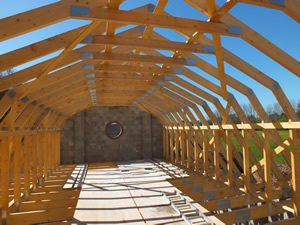 The production and use of a roof truss is a vital part of building a safe and reliable roof that can then be incorporated with a range of other construction processes that eventually make up a building.
The production and use of a roof truss is a vital part of building a safe and reliable roof that can then be incorporated with a range of other construction processes that eventually make up a building.
A roof truss refers to the frames made up of timber – that are nailed, bolted or pegged together to form a structurally independent shape that has a great amount of strength. The roof truss is designed to bear weight from the timbers and coverings found on a roof, and are also generally designed with the ability to withstand wind, snow and rain fall. Trusses are also in place to help prevent walls from bending or flexing, which is extremely important – especially for buildings with several stories.
Roof trusses have three main properties:
• Strong timbers
• Even distribution of load
• Strong connection of truss parts
Roof trusses are generally designed to be able to last decades, as buildings are often a large investment that requires long term establishment and safety to those who use it. This means a good roof truss will be designed to fight off any immediate risks of damp, rot, insect, animal infestations and other penetrating problems. Often, Boron based preservatives can help beat these problems, through preventing initial complications, or preserving against further damages on existing buildings. To know that the roof truss parts are properly connected – the use of bolts, plates, nails and screws act as a very reliable method that make up for a very sturdy roof truss.
Aber Roof Truss Ltd is a reputable and trusted company specialising in serving customers with the best quality roof trusses available on the market. The company can offer a free site survey and service for potential contracts that range from the smallest of jobs, to multi million pound projects.
